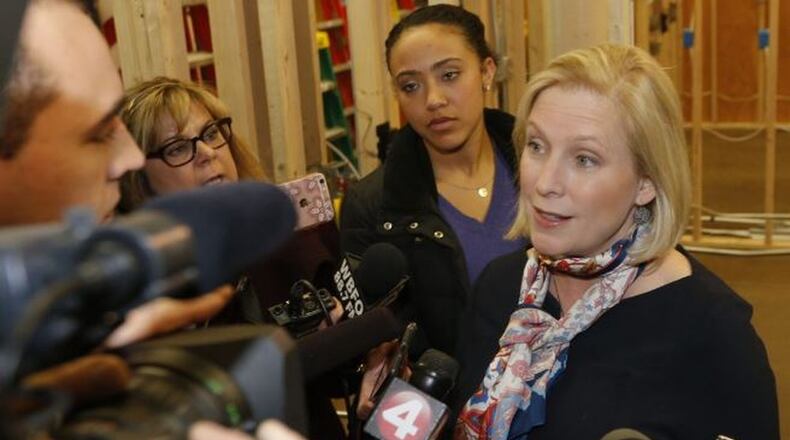Sen. Kirsten Gillibrand, D-N.Y., claims the major tax overhaul Congress just passed will increase tax bills for middle-class earners in New York state, with filers who pay state and local taxes hit particularly hard.
She made the claim before Republicans released their final tax bill. We're basing our fact check on details that were available at the time.
Research groups across the political spectrum agree that the middle class will benefit from provisions in the tax law — at least at first.
The standard deduction will double to $12,000 for single filers and $24,000 for married filers. More filers will come out ahead using the standard deduction instead of itemizing state and local taxes.
A majority of middle-income filers already take the standard deduction instead of itemizing. About 44 percent of those making between $50,000 and $75,000 deduct state and local taxes in New York state, according to the Tax Policy Center.
Even in states like New York, where a third of taxpayers deduct their state and local taxes from their federal tax, the new limits on those deductions are not likely to result in higher overall tax bills.
Tax rates for middle-income earners will go down. Those making between about $38,000 and $70,000 will see their federal tax rate decrease from 25 percent to 22 percent, for example.
Middle-income filers will also benefit from a provision to double the child tax credit to $2,000. For those who owe little or no taxes, up to $1,400 of that credit is refundable.
"The good news for taxpayers is that every income group would pay less in taxes in 2019," according to a PolitiFact analysis.
The analysis was based on data from the Joint Committee on Taxation, the nonpartisan group that analyzes tax bills for Congress, and the Urban Institute-Brookings Institution Tax Policy Center, an independent group that models the effects of tax legislation.
The Joint Committee on Taxation predicted taxpayers making $40,000 and up would see a tax cut until 2025 under the law.
In 2019, filers at every income level will see a tax cut. The average person making $45,000 would see the amount of their income spent on federal taxes decrease from 10.9 percent to 9.9 percent, according to the committee’s report.
The tax benefit shifts after 2025 when most changes for individual filers expire, including the lower tax brackets and cap on state and local tax deductions. After the individual provisions expire, all filers who make $75,000 or less annually will see a tax increase.
“Only those income ranges above $75,000 still see a cut by 2027,” according to the PolitiFact analysis. “That’s a significantly different pattern than in 2019, when every group saves, on average.”
Republicans hope a future Congress will extend the individual provisions. Experts believe that’s likely, though it’s not guaranteed.
Our ruling
Gillibrand’s contention that the Republican tax plan “raises middle-class taxes” is not true during the first years of the new tax provisions. If not for the sunset for the tax changes for individuals, we likely would have rated Gillibrand’s statement False or perhaps Mostly False. Middle-income taxpayers will either benefit or see no change in their tax liability through 2025.
But her claim could hold up after the bill’s individual provisions expire that year. There’s no guarantee a future Congress will extend those parts of the bill.
So for that reason, her statement is partially true but still ignores important details. We rate it Half True.
“The truth is this tax (plan) raises middle-class taxes.”
— Sen. Kirsten Gillibrand, D-N.Y., on Friday, December 15th, 2017 in Buffalo
About the Author
The Latest
Featured


